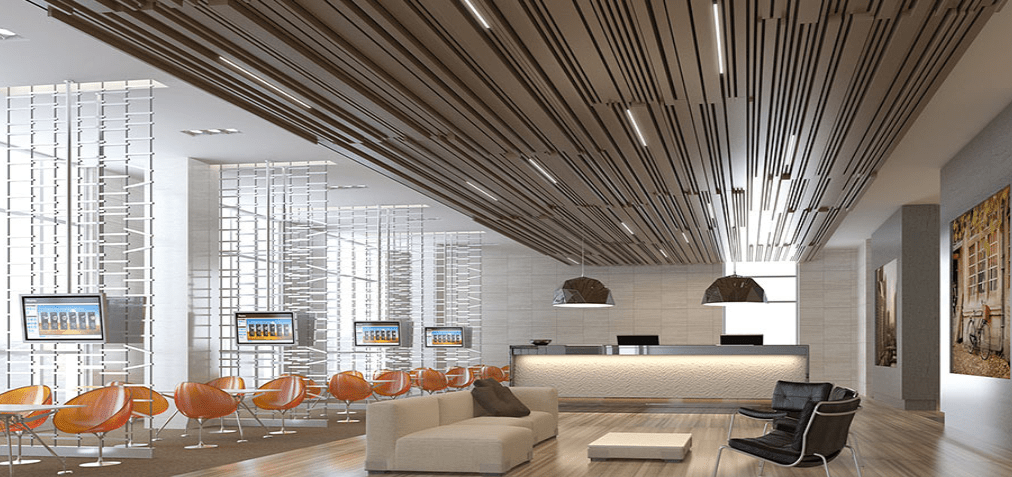
The construction industry is always looking for ways to build smarter, more efficient buildings. And one of the latest trends in this pursuit is the linear ceiling. So, what is a linear ceiling? In short, it’s a type of ceiling that consists of long, straight lines instead of traditional square or rectangular tiles. But why are linear ceilings becoming so popular in smart buildings?
There are actually quite a few reasons. For one, linear ceilings can help to create a more open and airy feel in a space. They also offer more flexibility when it comes to lighting and acoustics. Plus, linear ceilings are easier to clean and maintain than traditional tile ceilings. In this blog post, we’ll explore all of these reasons in greater detail and show you why smart buildings need linear ceilings.
What are smart buildings?
Smart buildings are those that are equipped with advanced technologies that allow for more efficient and effective management of the building’s systems and operations. In order to be classified as a smart building, the structure must be able to integrate and manage a variety of data sources using information technology. This allows for real-time monitoring and data-driven decision-making in order to improve the overall efficiency of the building.
One of the most important aspects of a smart building is its ability to optimize energy usage. This is done through a variety of means such as automating lighting and temperature control systems, using renewable energy sources, and employing energy-efficient practices.
By reducing the amount of energy required to operate the building, not only can organizations save money, but they can also help reduce their environmental impact.
In addition to saving energy, smart buildings also improve comfort levels for occupants by providing them with greater control over their environment. For example, employees may have the ability to adjust their own individual lighting settings or temperatures within certain limits set by the organization. This not only leads to increased satisfaction levels among employees, but it can also lead to increased productivity.
Finally, smart buildings can help improve safety and security conditions by integrating various security systems and using data analytics to identify potential risks. For example, if there is an unusual spike in activity in a certain area of the building late at night, this could be flagged as suspicious and investigated accordingly. Or, if an employee badge is used to
What is a linear ceiling?
Linear ceilings are a type of ceiling that is characterized by their linearity. That is, linear ceilings have a straight, uninterrupted line running along their length. This type of ceiling is often used in office buildings and other commercial spaces, as it can create a clean, modern look.
Linear ceilings can also be made of different materials, such as wood or metal, and can be decorated with different finishes, such as paint or wallpaper.
How can linear ceilings benefit smart buildings?
Linear ceilings can benefit smart buildings in a number of ways.
First, they can improve the acoustics of space by absorbing sound and reducing noise levels. This can create a more comfortable environment for occupants and help to increase productivity.
Second, linear ceilings can help to regulate temperature by providing insulation and regulating airflow. This can reduce energy costs and create a more comfortable indoor environment.
Finally, linear ceilings can improve the aesthetics of a space and contribute to its overall design.
Why are linear ceilings a necessary component of smart buildings?
Linear ceilings are a necessary component of smart buildings for several reasons.
First, they help to evenly distribute light throughout a space, which is important for both energy efficiency and occupant comfort.
Second, linear ceilings can be equipped with sensors and other devices that help to manage lighting and climate control in a space, further improving energy efficiency.
Finally, linear ceilings can be used to create interesting architectural features or hide ductwork and other unsightly elements in a space.
How to choose the right linear ceiling for your smart building
When it comes to choosing the right linear ceiling for your smart building, there are a few things you need to take into consideration.
The first is the purpose of the room or space. Is it for office space, retail space, or public space? The type of room will dictate the type of ceiling you need. For example, a retail space will need a different ceiling than an office space.
The second thing you need to consider is the size of the room or space. This will dictate the size and number of linear ceiling panels you need. The larger the room, the more panels you will need.
The third thing to consider is the acoustics of the room or space. This is important because you want to make sure that sound does not echo in the room and that conversations can be easily heard. Linear ceilings are great at absorbing sound, so this is something to keep in mind when making your selection.
Finally, you need to consider the aesthetics of the room or space. This includes things like color and style. Linear ceilings come in a variety of colors and styles, so you should be able to find one that fits with the overall look and feel of the room.
Conclusion
Linear ceilings are a valuable addition to any smart building for many reasons. They improve the acoustics of a space. Hey can be used to control temperature and lighting, and they can even help with wayfinding. If you’re looking for ways to make your building smarter, start with the ceiling. Linear ceilings are an easy and effective way to upgrade your space and make it work better for everyone who uses it.



